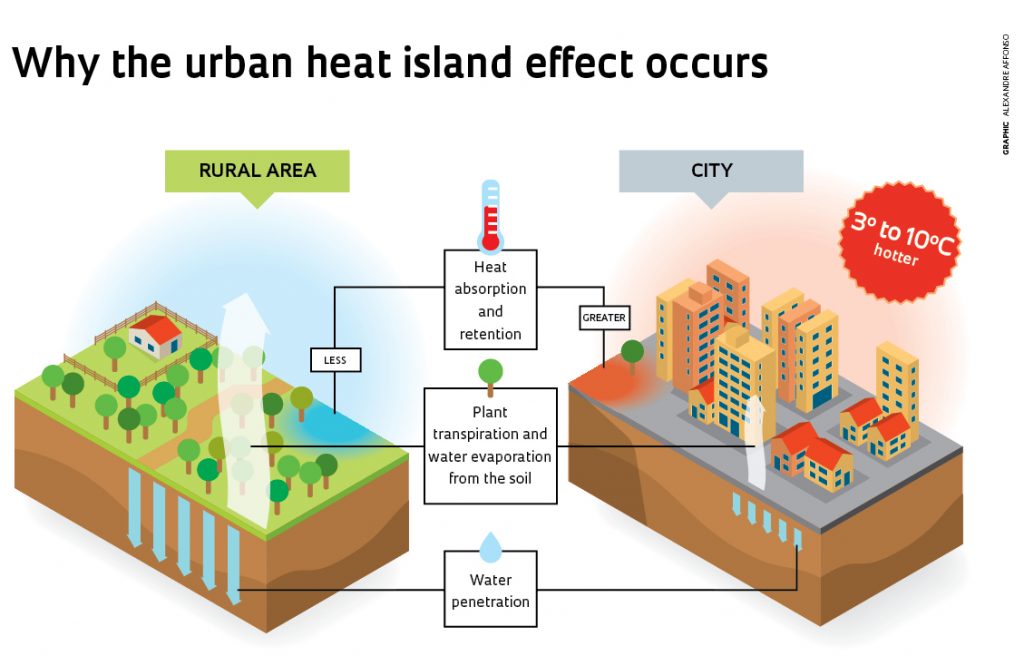Urban Heat Island Effect
There are many reasons for UHIs. When houses, shops, and industrial buildings are constructed close together, it can create a UHI. Building materials are usually very good at insulating, or holding in heat. This insulation makes the areas around buildings warmer – National Geographic
Nighttime temperatures in UHIs remain high. This is because buildings, sidewalks, and parking lots block heat coming from the ground from rising into the cold night sky. Because the heat is trapped on lower levels, the temperature is warmer – National Geographic
According to Architecture and Design, a whole range of design elements fall under the umbrella term of “cool roofs”. Essentially, a cool roof is one that reflects the suns heat and emits absorbed radiation back into the atmosphere at a higher rate than standard materials, literally staying cooler than a standard roof. This reduces the amount of heat transferred into the building below, keeping it at a more constant temperature.[1]
Mat Santamouris, Scientia Professor at UNSW states UHI is mainly because of the release of sensible heat from materials, anthropogenic heat, heat advection, etc. Metal surfaces because of their low mass present higher surface temp and release more sensible heat increasing the UHI intensity than any other surface during the daytime, except if they present low emissivity. Using reflecting paints their surface temperature decreases by 10 to 15 C during the peak and the sensible heat is equally reduced contributing to mitigate heat. The study of DISER has demonstrated the fantastic impact of cool materials on urban heat mitigation and energy reduction of buildings. Everywhere in Australia, except Tasmania, cool roofs decrease the total energy consumption of buildings.
Cool roofs are reflective surfaces designed to reflect more solar radiation and absorb less heat than a standard roof – Victorian Energy Saver Program
NEOtech Coatings
How Super Therm® can reduce CO2 emissions in your business and save money on energy.
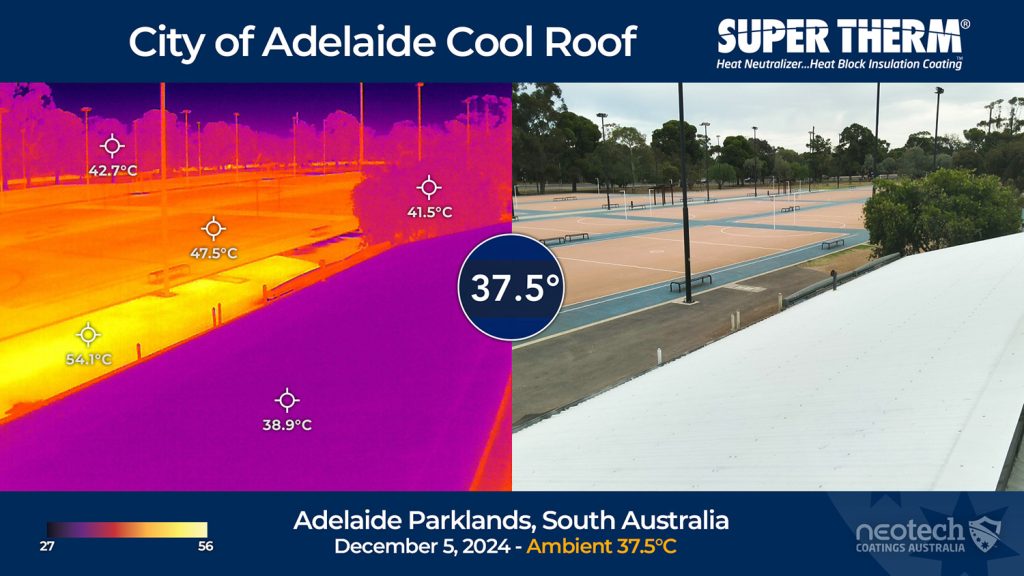
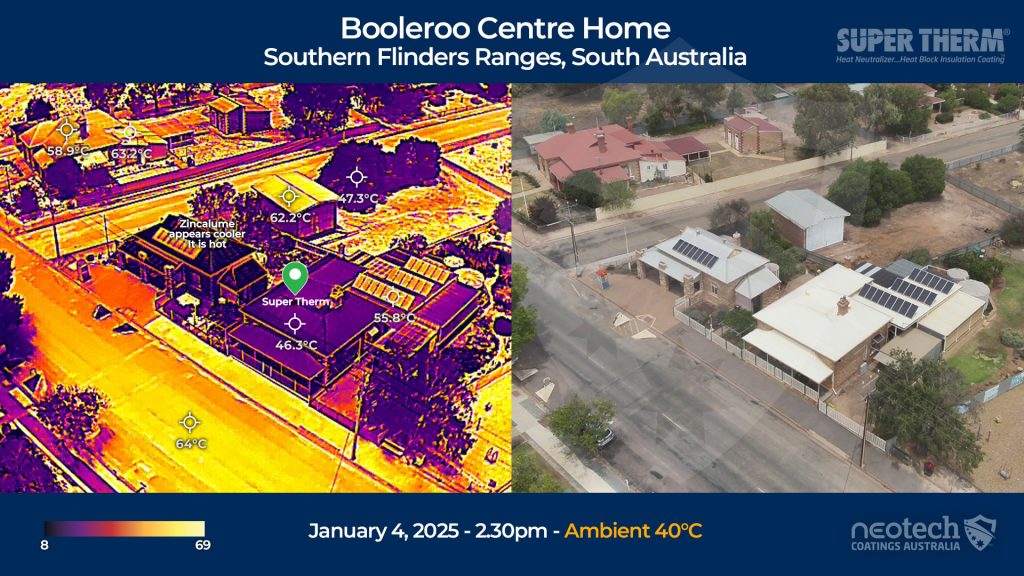
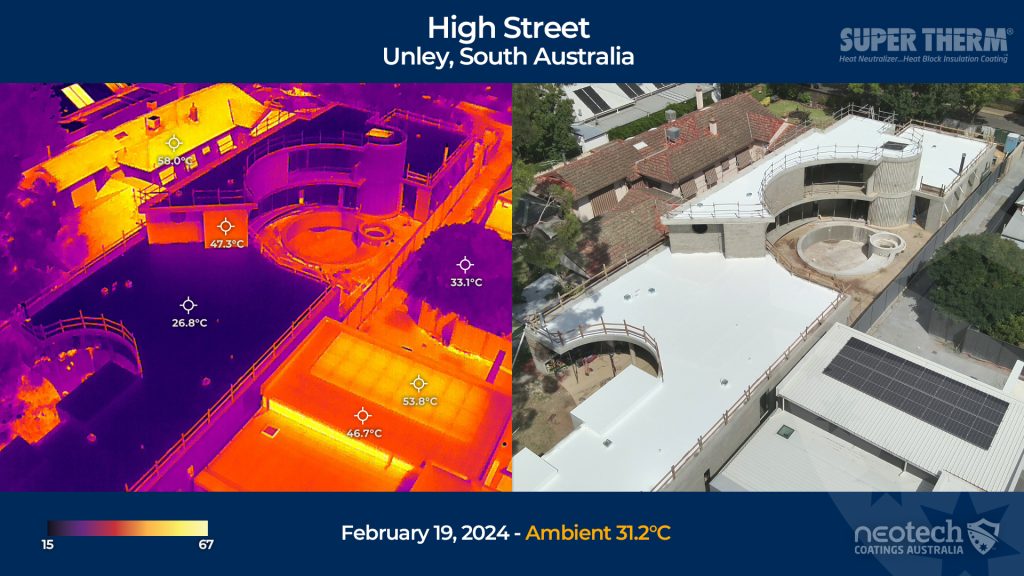
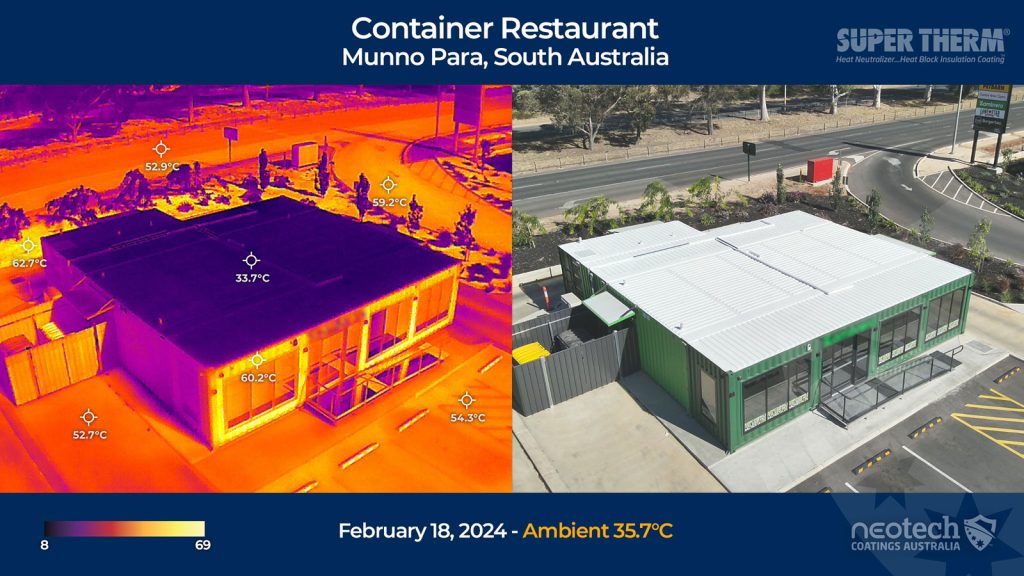
When we compare in Google Maps, Darwin’s use of cool roofs with the City of Parramatta there is a noticeable difference in light coloured roofs. While Darwin as a community understands the net gain of utilising cool roofs. It is important to understand there are additional benefits by applying the correct solar heat block coating technology that gives sustainable and long term solar heat reflection.
| v | ||
| City of Parramatta (Google Maps) | City of Darwin (Google Maps) |
Urban Heat Island effect for the City of Parramatta, NSW
Urban Heat Island effect for the City of Darwin, NT
Human Health
The health danger for humans is very real for rising temperatures, and it’s not that far away. There’s something called wet bulb temperature. In short, if the combination of the ambient air temperature and the ambient relative humidity is above 35.5-36C, the human body will begin to cook.
“…if you’ve got a fan blowing hot air around you, you’re going to cook.”
Craig Crandall, Professor at University of Texas Southwest
For instance, if the relative humidity was 50% and the air temperature is 45C, the wet bulb temperature is just over 35. The proteins in the body begin to fall apart – “denature” – they cook. In the table below, you can see how the combination of temperature and humidity affect liveability. Anything in light orange is very uncomfortable.
The thresholds in orange are combinations at which you need to change your environment or leave if you cannot. The results in very dark orange are wet bulb temperatures at which flesh starts cooking, and you begin to die. Source

Cool roofs remove the increased risk of higher temperatures in homes and buildings. Air conditioners won’t function well over 45C so finding ways to block intense solar heat are only a 250 micron coat away with Super Therm®…our specialised ceramic thermal block coating.
Hotter climates means more power and more discomfort
The Climate Council said “Climate change is making hot days and heatwaves more frequent and more severe. Since 1950 the annual number of record hot days across Australia has more than doubled and the mean temperature has increased by about 1°C from 1910.” (source).
Specifically, there has been an increase of 0.2 days/year since 1957 which means, on average, that there are almost 12 more days per year over 35°C.
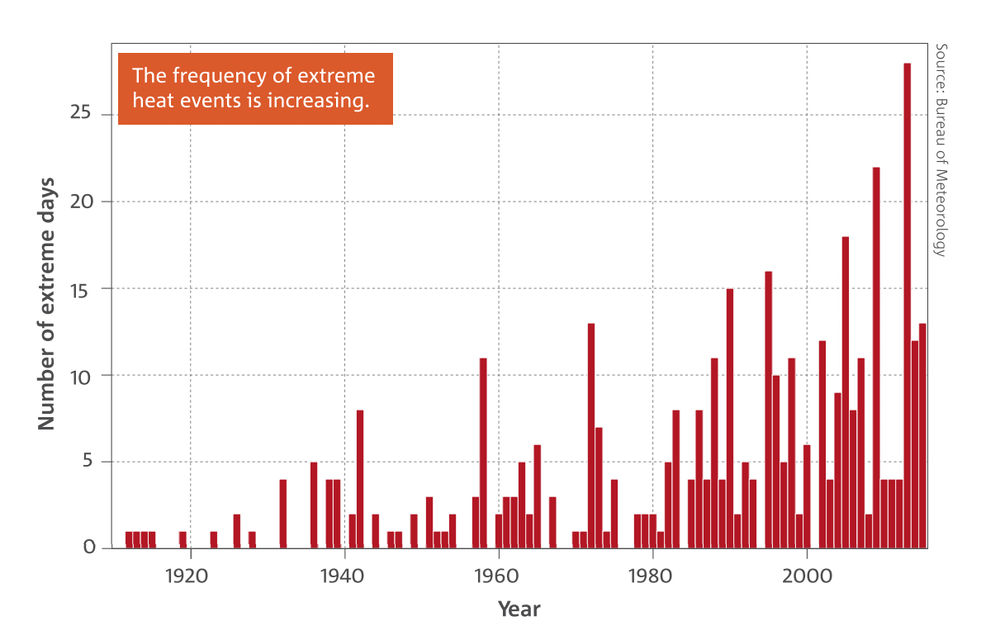
Summary
- Australia’s and the world’s global temperatures are rising
- Australia has amongst the highest electricity prices globally
- 25-35% of heat is transferred into a building is through the roof
- Air conditioners have to work harder to keep the heat out and are costing Australia more than $1.3 billion over the summer months not to mention more CO2 emissions (source)
- Dark roofs attract 50% more heat than light roofs
- Bulk insulation absorbs heat load in the building and then releases it into the structure and; it can’t keep up with rising temperatures
- NatHERS specification doesn’t allow for stopping heat
- New options need to be considered as part of the overall strategy.
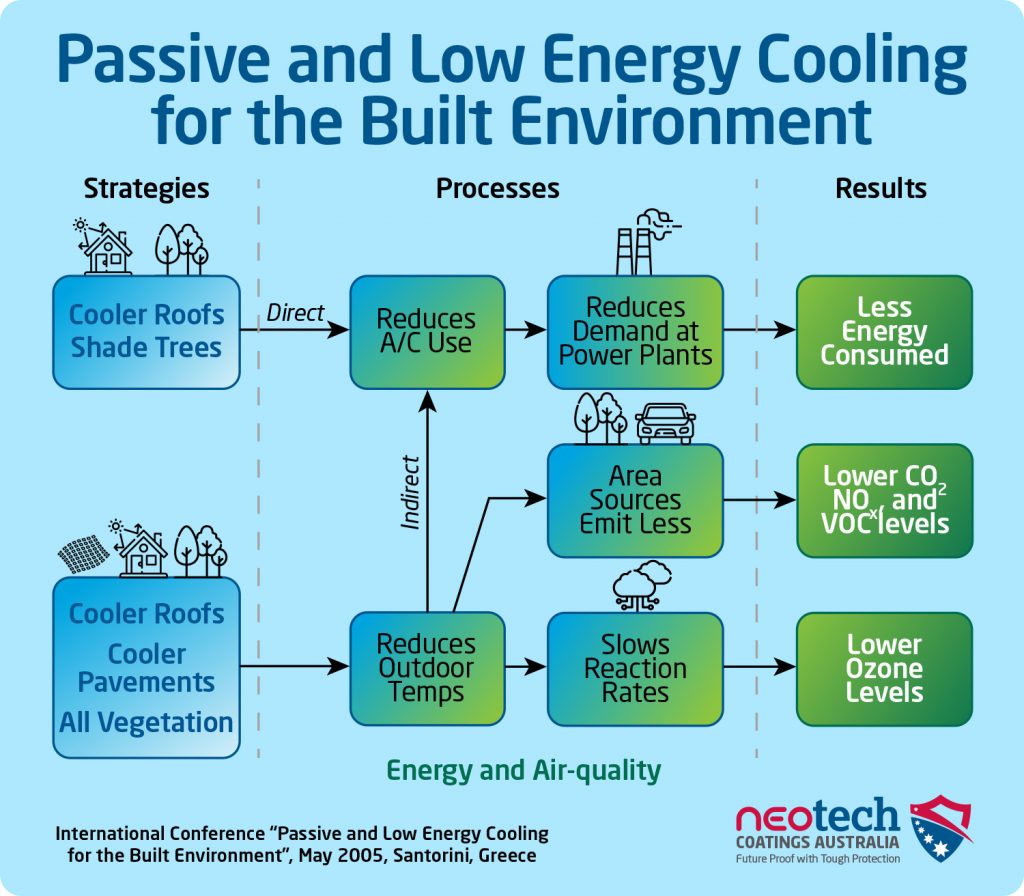
Related Articles
- Australia’s Cool Roof Building Energy Efficiency Opportunity
- Global cities grapple with how to cool ‘urban heat islands’
- Adelaide’s urban heat islands are compounding the effect of heatwave conditions
- Effects of Urban Surfaces and White Roofs on Global and Regional Climate
- Driving Increased Utilisation of Cool Roofs on Large Footprint Buildings
- What Makes a Cool Roof Cool
- Cool Roofs and Heat Reflective Paints – Dr John Pockett Uni SA
- Victorian Energy Saver Insulation and Cool Roofs – PDF
- Home energy efficiency could be improved significantly through simple tweaks like roof colour
- What makes a cool roof “cool”?
- How Urban Heat Islands are Affecting the Environment and our Health
- Use of Cool Roofs and Vegetation to Mitigate Urban Heat and Improve Human Thermal Stress in Melbourne
NEOtech Coatings
At NEOtech Coatings Australia we understand the significant savings to be had through managing your energy absorption through the roof and walls. Our global studies over 30 years with our high performance coating manufacturer SPI Coatings are 100% confident Super Therm® delivers to solutions for less energy use, improved comfortable, heat island effect reduction and protect your roof!
How Super Therm® can reduce CO2 emissions in your business and save money on energy.



